5 plants to forage in winter because foraging enthusiasts don’t stop foraging when the snow falls. They look for plants to forage in winter, knowing that this is the best season for these edible and medicinal wild plant allies.
A white Christmas in Vancouver is a rarity. And a good sign for most. Unfortunately, the light dusting of snow meant I didn’t see the unkept sidewalk, among a street of well shoveled walkways. And when I went out for a walk on Christmas afternoon I slipped on the ice and hit my head.
I was alone. Since I was just going out for a brief walk, I wasn’t carrying my cell phone, nor my purse. I had no ID and I didn’t know my son’s address or his cell phone number. Thankfully, I didn’t lose consciousness and I was able to get up off the sidewalk and walk back to my son’s house. No broken bones. Just a mild concussion. But lesson learned. I won’t go out again without my cellphone and at least one piece of ID.
Thankfully I had my arnica salve and yarrow tincture with me in my travel first aid kit. I applied the yarrow tincture immediately as the bump rose on the back of my head to 4 inches in diameter. Then I smeared the arnica salve over the bump and held a baggy of ice cubes against the bump.
Within just a few minutes the bump shrunk to 2 inches and then by the next morning it was just a bruise. I’ve continued to pour yarrow tincture on it both to soothe the bruising and to relieve the tenderness. As I write this it’s almost fully resolved.
The take away: Carry ID when you are out and about in a city that’s not your home. If you are prone to slipping on the ice, wear ice grippers on your shoes. I wasn’t wearing them.
And keep your foraged herbal remedies at hand, especially when you travel away from home. In this case arnica salve and yarrow tincture. I also had lavender essential oil with me and I applied a few drops to the bump on the back of my head to ease the pain the first few nights.
I’m feeling much better, thanks.
Why yarrow and arnica?
Yarrow and arnica are summer herbs. Arnica is a yellow daisy-like wild flower that is amazing for resolving bruising, inflammation, bumps, and strains. See this post for more on making arnica salve for your herbal apothecary. (If you would like to try growing it you can find seeds at Richter’s Herbs here.)
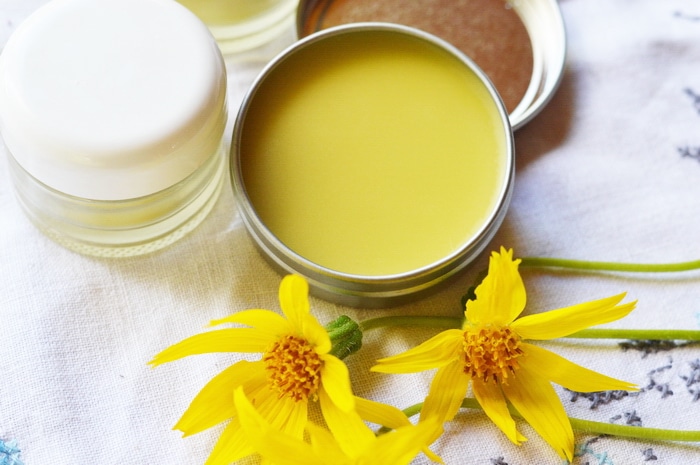
Yarrow is renown for resolving wounds, infection, bleeding, and bruising. See this post about using yarrow for stopping bruising and bleeding and this post with directions for making a yarrow tincture.

It’s good to have summer herbs in the middle of winter when you need them. Don’t you think? If you are a forager you can have them anytime you need them. And if you run out you’ll know where to get a fresh supply in the spring.
Forage in Winter
But if you’ve got several feet of snow on the ground like we do, in the BC mountains in January, you aren’t thinking much about yarrow and arnica unless you are perusing the seed catalogs from Richter’s Herbs.
Instead you’re sitting indoors with a roaring fire, a warm cup of herbal tea, and a long book. But in a few weeks you’re going to be looking longingly out the window, hoping for a sunny day when you can venture outdoors. So in this email I wanted to give you a reason to walk in the woods — away from icy, unkept sidewalks — to look for a few nutritious and medicinal plants. (But do carry some ID and a cell phone. Don’t make my mistake.)
First the walk in the woods does a body good. Both the exercise in the cool air and sunshine, and the negative ions that the forest exhales. It’s called “forest bathing” and it helps to elevate mood and give a strong sense of well being and joy. (It’s the cure for cabin fever.) Second in your walk in the woods you’ll have a mission, to forage for a few choice plants that can give some fresh flavor and nutrition to winter cooking and winter tea.
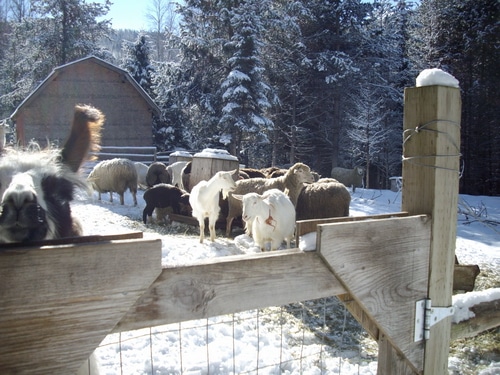
Conifers
Did you know that most evergreens are edible and medicinal? Every part of the pine, spruce, and fir trees are edible and rich in antioxidants, vitamin C, and other nutrients. Their deep roots draw minerals up from deep in the soil. Different trees even from the same species will have different flavors, some more citrusy and some more resinous, so nibble on a pine or fir needle or two before you decide which tree to harvest from. Firs especially have a fine, citrus-y flavor, lower in the reninous quality of other evergreens.
Can I eat my Christmas tree?
Some readers asked me about turning their Christmas tree into medicine. If you harvested the tree yourself from the wild that’s a great idea. But if your tree came from a tree farm or from a road side stand it was likely sprayed with chemicals to keep it looking green and pest free. Avoid using those trees for food or medicine.
However, wild conifers like fir, spruce, pine, juniper, and cedar have strongly scented branches that are the perfect addition to winter baking, winter marinades, and even syrups and liqueurs. Juniper makes a good substitute for rosemary if you live in the colder regions where rosemary doesn’t over winter.
I’ve got juniper vodka infusing as we speak, as well as fir and rosemary infused white vinegar for salad dressing and marinades. Pine and spruce needles can also be dried, removed from their branches and powdered as a lemony addition to tea, salt, or even sugar syrups. Winter can be dull and the extra vitamin C, antioxidants, and citrusy taste can perk up your senses and help you feel alive again.
Learn to know and identify your local confers. Once you’ve shaken hands with a spruce you’ll never mistake it for a pine. Spruce needles grow individually along the branch and if you grab them, they’ll prickle. Whereas pine needles are bundled in bunches on the branch, and are softer. Fir needles are short and soft, but rounded. They lie flat on the branch. Common juniper also has short needles with a little more prickle, but the shape of a juniper bush is quite different than a pine tree, lacking a central trunk.
The only conifer you should avoid is Western Yew which is reported to be poisous. But yew needles and fruit look nothing like pine and spruce with their cones, so if you have a good plant ID book, you won’t go wrong. Yew doesn’t grow near me, but you’ll find it in the woods if you live in the Pacific Northwest, west of the Cascades.
Pregnant women should avoid Ponderosa Pine which causes miscarriage in cattle.
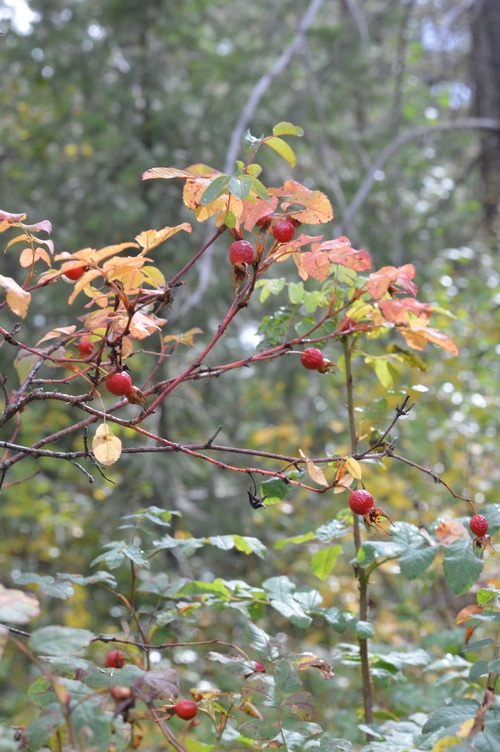
Rosehips
Rosehips are another wild offering that can be found even when there is snow on the ground. The hips soften with the freezing weather. If your area experiences warm days with freezing nights, the hips may begin to ferment. This is nature’s way of preserving them. They are safe even if they are a little fermented. In winter tea they offer vitamin C and flavinoids plus a rosy color. If you have a lot of them turn them into jam or jelly. Or remove the seeds and add them to fruit compote with other berries.
Balm of Gilead or Cottonwood or Balsam Poplar Buds
Winter is the time to forage for balm of gilead aka cottonwood buds. These are the buds that will grow into next spring’s leaves. You can harvest them anytime after leaf drop and before the buds swell and open in April or May. The buds are sticky and resinous, contain salicin, and are generally infused in olive oil to make an anti-inflammatory salve. They have a sweet perfume.
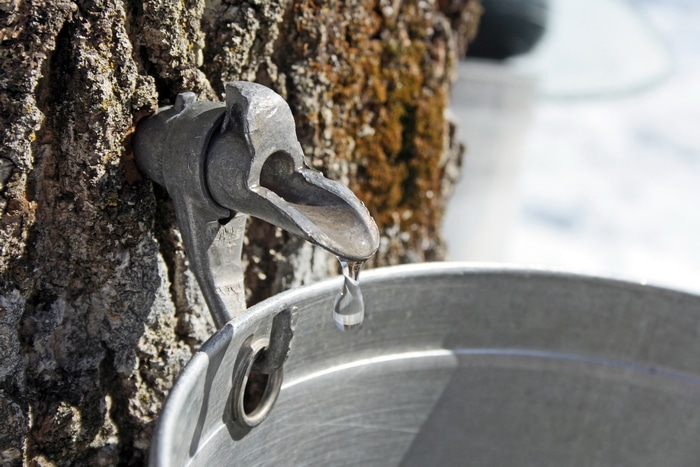
Tree Syrups
As the days lengthen and your area starts to see days above freezing and nights below the sap will begin to rise. This is the time to tap your trees for sap to be boiled into syrup, to be made into beer, or just to drink in good health. Birch, maples, walnuts, butternuts, and a wide variety of other trees you may not of thought of, can be tapped for their nutritious sap. This post about making tree syrup will give you the information you need to be successful, if you want to try making tree syrup this spring. Here’s how to make your own spile for tapping trees, from wood in your wood pile.
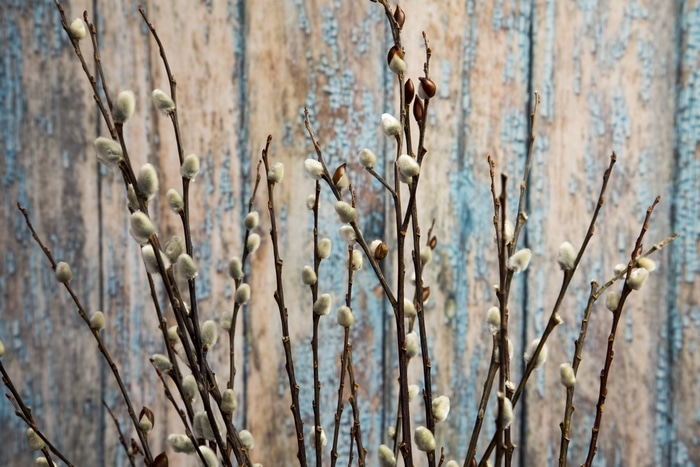
Pussy Willows
Pussy willows are ready to harvest at the end of February or the beginning of March in many areas. They are often the first buds of spring and start to swell while the snow is still on the ground. Harvest the branches and bring them home to force for flower arrangements. If you put them in water they will sprout roots and can be planted as soon as the ground thaws to make more plants.
Willow bark can be harvested at the same time as pussy willows. The bark slips easily from the branches in winter and can be dried for tea or tincture. Willow bark is another salicin containing herb.
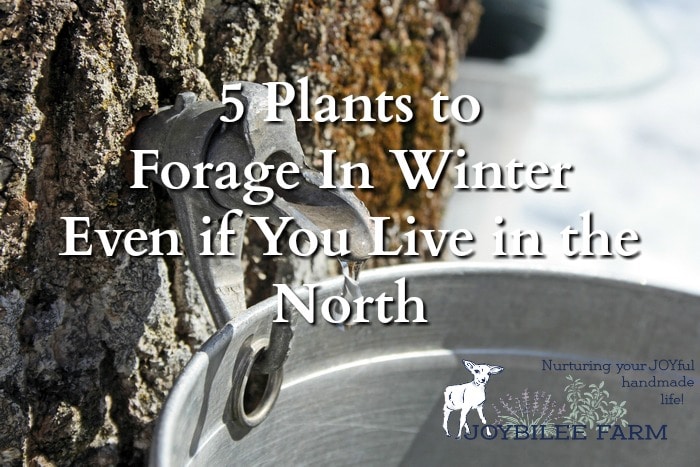
These 5 plants are not the only plant allies to forage in winter, however. This is just a sampling of the abundance that the woods, fields, and even rural parks have to offer the astute forager. If you are a beginner at foraging, you will want a good regional field guide to help you identify your local assets, plus an experienced forager to help you identify local plant assets you can add to your knowledge base, so you can forage safely. There may be a foraging course offered at your local community college that can increase your knowledge. If you don’t have local resources to help you learn to forage wisely, it’s worth investing in an online course to teach you the basics.
Knowing your wild herbal and edible assets can be life saving.


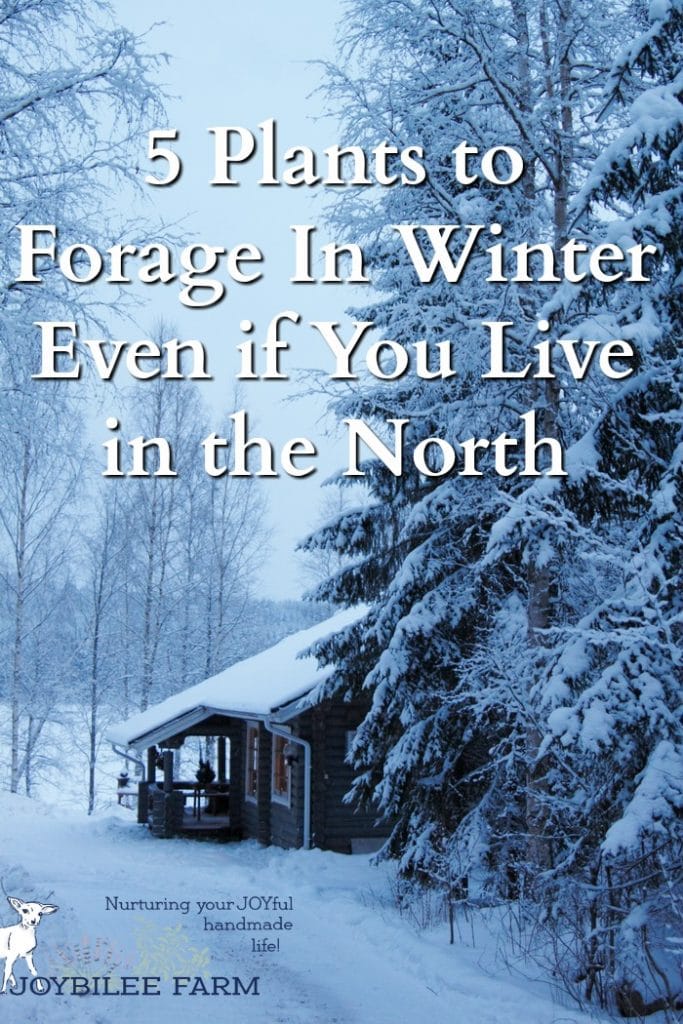
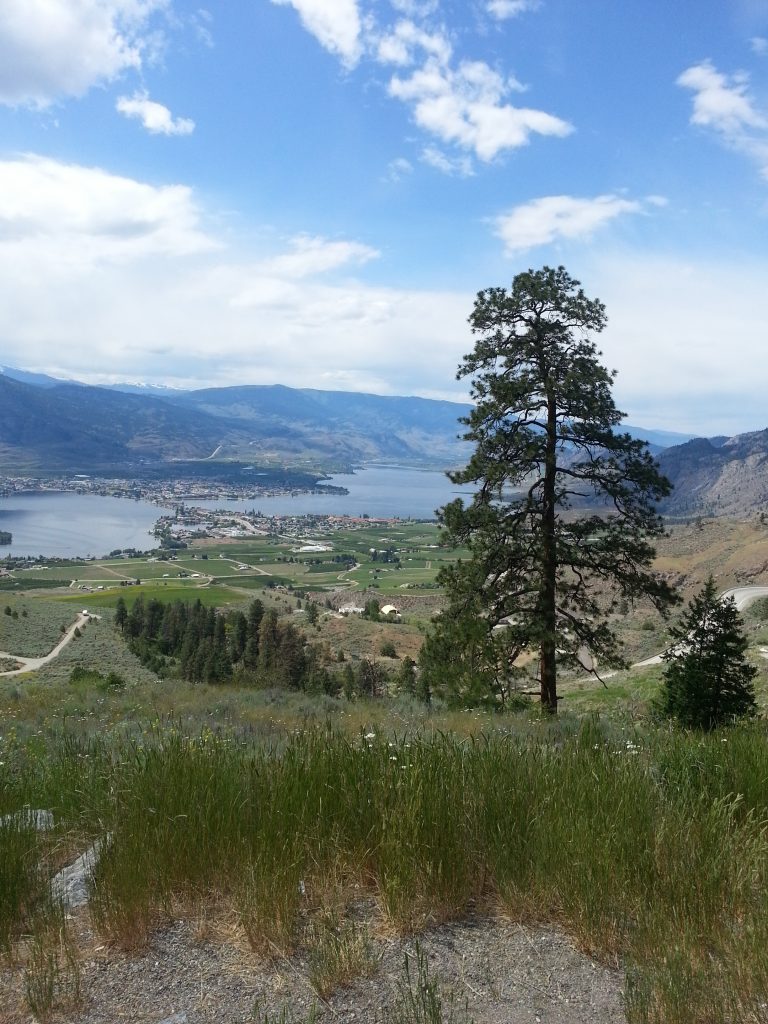
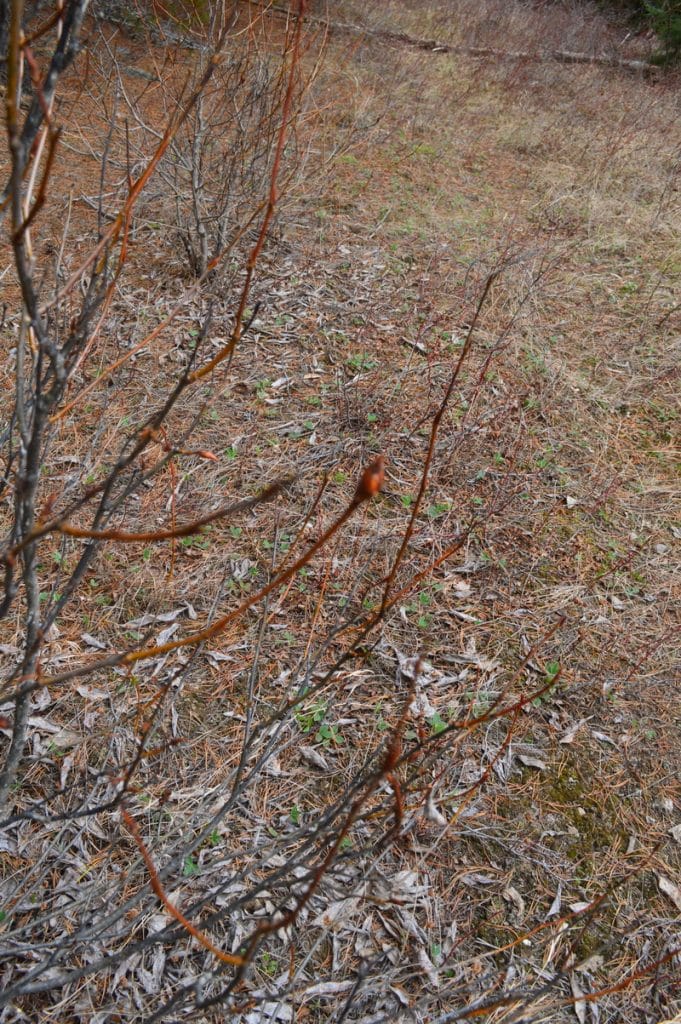

Thank you for this. I’m on Vancouver Island so I get similar weather
My friend is a huge forager and is a lover of the earths bounty. She introduced me to spruce tip salt & sugar. So this spring I foraged my spruce tips and made spruce tip ice cream (spruce tip sugar) and it goes heavenly with rhubarb pie!!!
Also spruce tip shortbread cookies….yum!!!!
That sounds yummy.
Early last spring we foraged the new, light green fir tips. They were a great additive to tea and vinegar, but amazingly were also delicious sautéed with a medley of mushrooms as a side for steak and bakers.